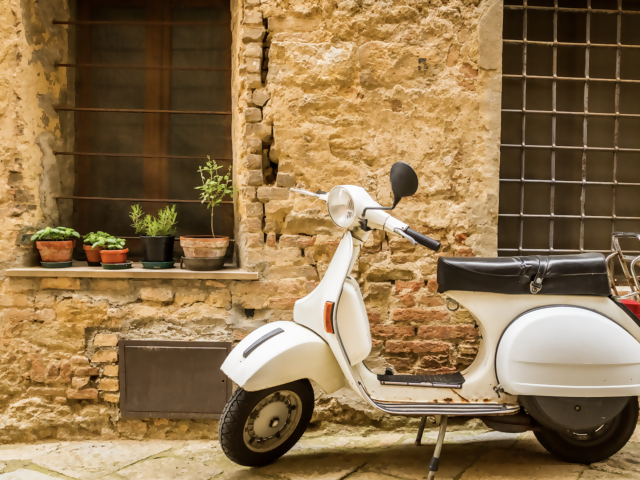70 percent of our planet is covered by oceans, and whales are not only the largest marine mammals, but the largest animals alive. No wonder humans are drawn to the oceans and these mammals who dwarf us and remind us how small we are in the universe.
Whale watching tops many travelers' wish lists. Seeing whales in their natural environment touches every traveler, no matter how young or old, and it's an experience accessible to travelers of all budgets.
As with any interaction with Nature, we recommend booking only with a licensed and reputable operator who knows the area and how not to interfere with the wildlife. Many regions are now protecting whale feeding and breeding grounds. Following protection guidelines helps ensure these fascinating creatures will continue to thrive for future generations.
Here's our list of the top whale watching destinations around the world, when to go, and what types of whales you can hope to see.
ALASKA
America's 49th state is a magnet for summer visitors, and May-September just happens to coincide with its prime whale-watching season, which is concentrated in the Inside Passage area, with tours originating from Juneau, Gustavus, Ketchikan, Petersburg and Sitka.
Although Orcas are seen along the Alaskan coast year round, and gray whales spend summers in the Gulf of Alaska feeding, the star of the show in the Inside Passage is the humpback whale, so numerous many operators guarantee you a free trip if you don't spot a whale on your tour. The incredibly rich waters provide enormous quantities of food the humpbacks need to gain literally tons of weight before migrating for the winter months to breed and calve in …
HAWAII
From December – April, an estimated 10,000 northern pacific humpback whales congregate in the warm waters of Hawaii to give birth to their calves, safely away from northern orca whale predators.
The calm and shallow waters between Maui, Lanai, Molokai and Kahoolawe provide humpbacks with the optimal conditions. Most tours originate on the west coast of Maui, like Lahaina and Maalaea. Tour operators also offer whale-watching excursions from the main island Hawaii.
BRITISH COLUMBIA
You may not be able to identify all the world's whales, but orcas (sometimes called 'killer whales') are unmistakable with their stylish black and white coloring. They are not the world's largest whale, but among the most popular – and the very best place in the world to see an orca in its natural environment is Canada's Vancouver Island mid May to mid September, with most whale watching tours starting in the Vancouver Island city of Victoria. For a more active option, try a whale-watching tour by kayak.

If you get off the beaten path, to the island's west coast, Tofino and Ucluelet are ideal places to see the migration of 20,000 gray whales as they pass the island on their journey between the Gulf of California and the Bering Sea between February and May. If you're there in mid-March, don't miss the Pacific Rim Whale Festival.
BAJA CALIFORNIA
The gray whales' yearly migration between Alaska and Mexico is one of the longest migrations of any marine creatures in the world. At the southern end of their journey, 20,000 or more gray whales as well as humpbacks, finbacks, and even blue whales gather in the rich, subtropical waters around the Mexican peninsula. Between December and March, the region is a whale nursery, where females give birth in shallow lagoons before heading north again in April.
Tours focus on gray whales, who are known to be curious, approaching boats, with gray whale calves often visible playing. Check out one of several annual whale festivals on the Baja peninsula in the early months of the year.
THE CARIBBEAN:
DOMINICAN REPUBLIC
You can combine your beach vacation in one of the most popular Caribbean islands with whale watching. This is the biggest whale-watching destination in the Caribbean, based in Samana Bay on the island's northern coast, which is now a designated sanctuary. At the beginning of every year, from January through March, thousands of humpback whales migrate to breed and calve in these protected waters.
In addition to having the opportunity to see humpback behavior like breaching and diving, and slapping the water with tail or fins, some tour operators are equipped with underwater hydrophones for you to hear these whales' unique 'singing'.
DOMINICA
Prime season for whale-watching on this island is from October through March. This long season includes migrating whales like humpbacks, and several varieties of dolphins, as well as sperm whales who live here year round. The steep mountains of the island are mirrored underwater. 3000-foot deep waters close to the west coast create a unique and protective home for 200 female sperm whales who can dive deep for food like giant octopus, and also rest in sheltered waters. Male sperm whales join them for a few months late winter and early spring for mating.
GUADALOUPE
The islands of Guadaloupe are in the midst of a ocean freeway for dozens of marine mammals. Even taking a ferry between islands, you can often spot wildlife. For a dedicated whale-watching tour, head to the north coast of Basse Terre, the closest point to waters that are home to sperm whales, migrating humpbacks, as well as a dream list of other Caribbean whales including pilot whales, orca, pygmy right whales, pygmy sperm whales, melon-headed whales and even the rare Antilles beaked whale along with several species of dolphins.
THE AZORES
They're like the Hawaii of the Atlantic. The Azores islands belong to Portugal but are 1500 km away from mainland Europe – almost halfway to Canada. There, in the middle of the Atlantic, 30% of all types of the world's whales and dolphins live permanently or pass by, including sperm whales, the most commonly-seen here as the males live here year-round and the females visit with their calves May-October, pilot whales, who live here all year too, and even the largest whale in the world, the blue whale, and finbacks during their migrations April/May and again September/October. Whale-watching is one of the top reasons travelers come to the remote Azores islands.
QUEBEC AND CANADA'S EAST COAST
The might Gulf of St. Lawrence stretches from Quebec, to New Brunswick, Labrador and the island of Newfoundland, with sheltered waters and abundant fish for hungry whales. The region has a 1200 km 'Whaleroute'. You can follow the route on a road trip that connects national parks for different whale experiences along the way, with many spotting opportunities from the land, and marine tours offered at many points along the way.

The southernmost pod of extraordinary, white beluga whales in the world live in Saguaney Fjord year round, blue whales in the summer, as well as minke, humpback and finback whales in different waves from May through October. Whale watching tours are popular in all of Canada's east coast provinces, including Nova Scotia's Bay of Fundy, one of the very few places n the world where rare northern right whales make an appearance.
ICELAND
Whale-watching is a year-round event in Iceland, where 11 species of whales can be spotted including blue whales, humpback, minke, sperm whales and orca. Most visitors travel to Iceland during the summer months, but whales can even be spotted in the winter. The town of Husavik, whose whale museum is well worth a visit, calls itself the 'Whale Watching Capital of Europe'.
SOUTH AFRICA
You may go to Africa for its Big Five land mammals, but don't forget the marine life off its coast. South Africa is surrounded on three sides by oceans rich in wildlife. From July til October, bulky but agile and playful southern right whales attract hundreds of thousands of whale watchers. 100 km east of Cape Town, Hermanus hosts a whale festival and even has a 'whale crier' who blows a horn when a southern right whale is spotted in Walter Bay.
Start your Trip!
Copyright BestTrip.TV/Influence Entertainment Group Inc or Rights Holder. All rights reserved. You are welcome to share this material from this page, but it may not be published, broadcast, rewritten or redistributed.







